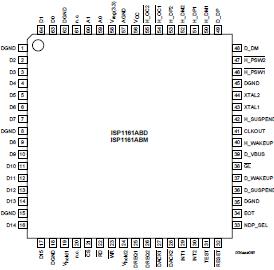ISP1161A: Features: ` Complies with Universal Serial Bus Specification Rev. 2.0` The Host Controller portion of the ISP1161A supports data transfer at full-speed (12 Mbit/s) and low-speed (1.5 Mbit/s); the De...
floor Price/Ceiling Price
- Part Number:
- ISP1161A
- Supply Ability:
- 5000
Price Break
- Qty
- 1~5000
- Unit Price
- Negotiable
- Processing time
- 15 Days
SeekIC Buyer Protection PLUS - newly updated for 2013!
- Escrow Protection.
- Guaranteed refunds.
- Secure payments.
- Learn more >>
Month Sales
268 Transactions
Payment Methods
All payment methods are secure and covered by SeekIC Buyer Protection PLUS.

 ISP1161A Data Sheet
ISP1161A Data Sheet








